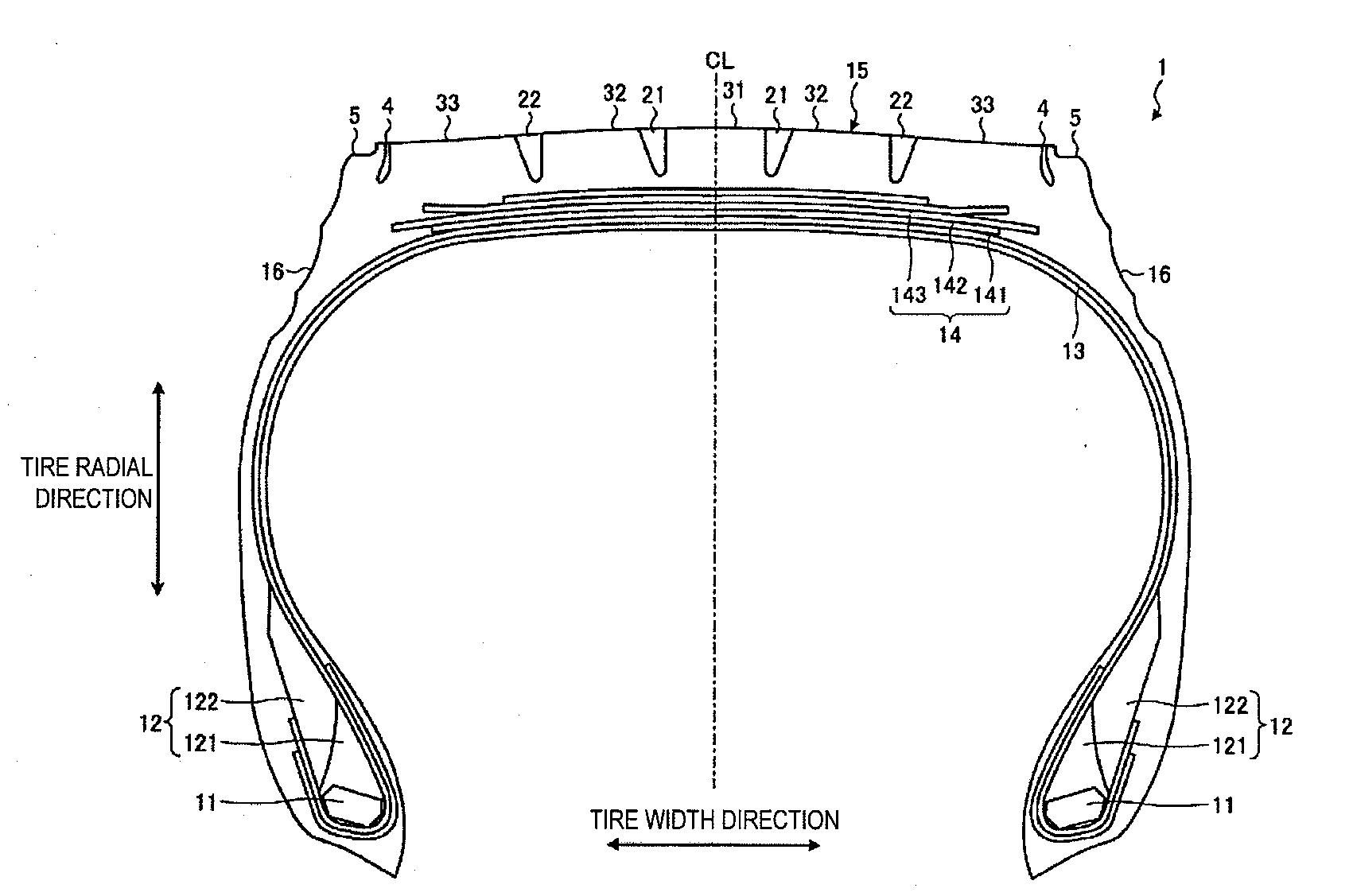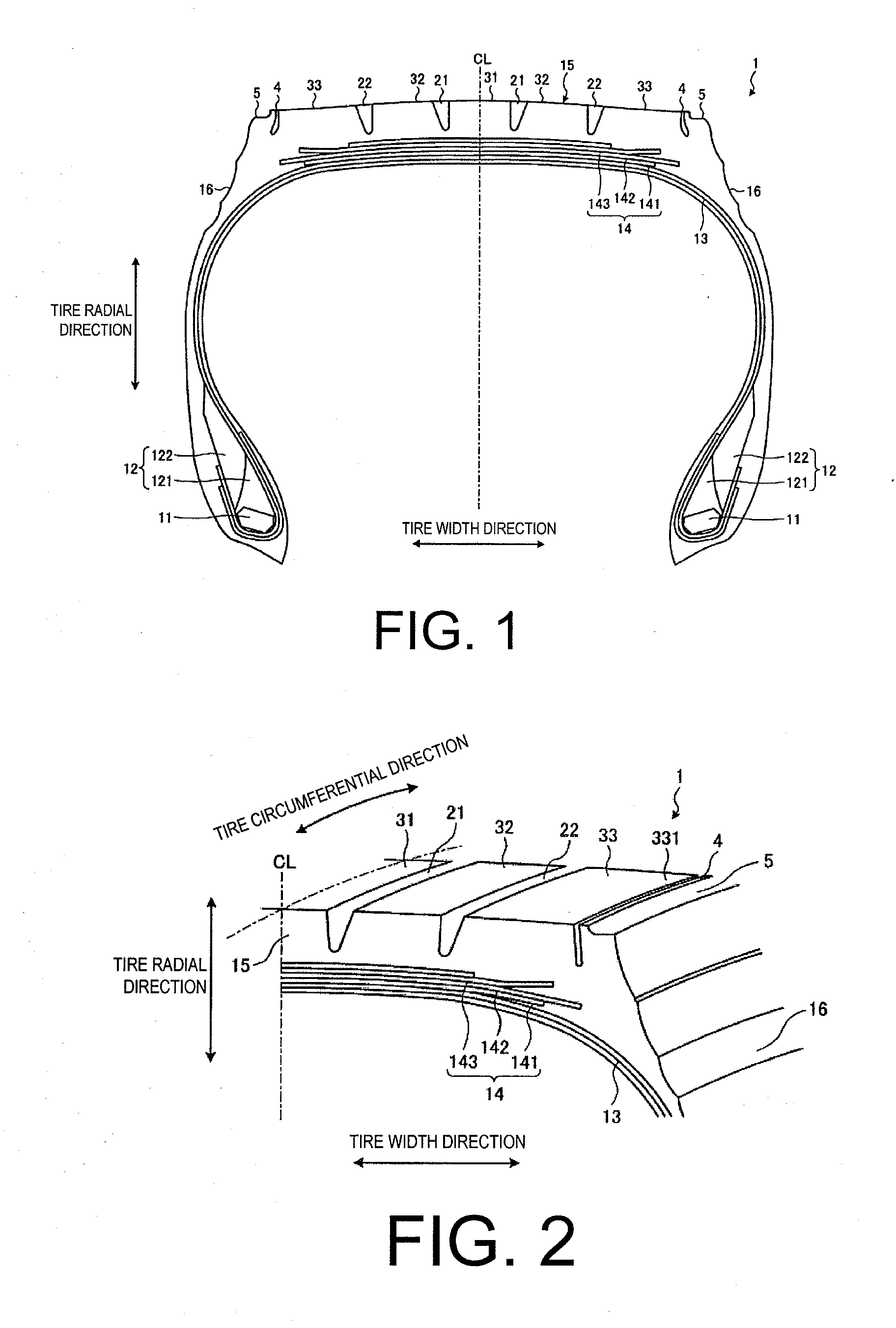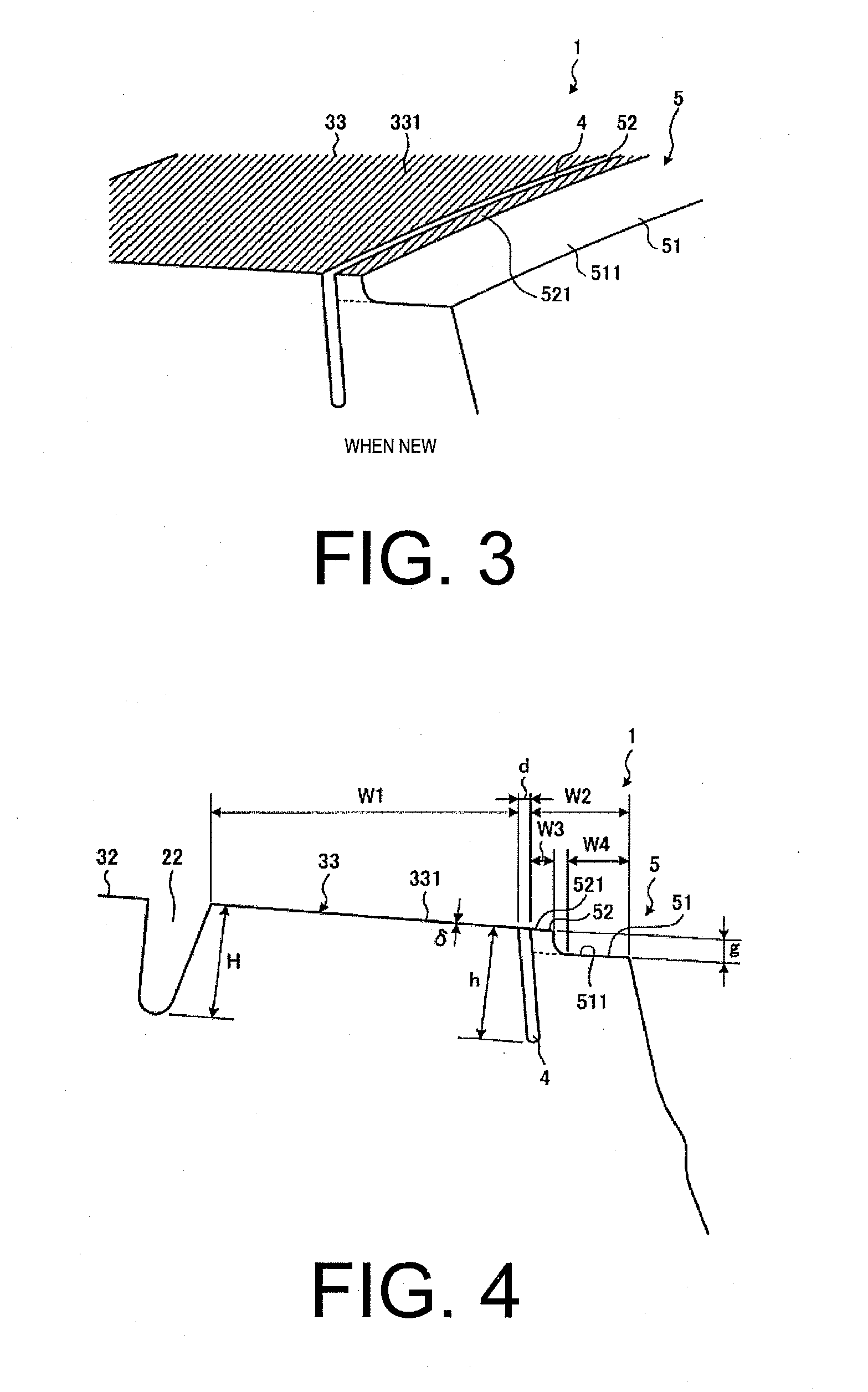Pneumatic tire
a technology of pneumatic tires and ribs, which is applied in the direction of non-skid devices, vehicle components, transportation and packaging, etc., can solve the problems of shoulder ribs and the need to suppress uneven wear, and achieve the effect of ensuring the functionality of the narrow rib 5
- Summary
- Abstract
- Description
- Claims
- Application Information
AI Technical Summary
Benefits of technology
Problems solved by technology
Method used
Image
Examples
examples
[0052]FIGS. 9-10 are tables showing the results of performance testing of pneumatic tires according to embodiments of the present technology. In the examples, uneven wear resistance performance tests were performed on a plurality of varying pneumatic tires.
[0053]In the performance tests, pneumatic tires with a tire size of 295 / 75R22.5 were assembled on TRA defined standard rims; and a prescribed air pressure and load defined by TRA were applied to these pneumatic tires. Additionally, the pneumatic tires were mounted on the steering axle of a North American Class 8 2-DD test vehicle. Next, this test vehicle was driven for 100,000 miles (about 160,000 km) and, thereafter, area and depth of uneven wear that occurred in the shoulder land portion was measured. The index value of the pneumatic tire of the Conventional Example was set as the standard score (100) and an indexed evaluation based on these measurement results was performed. With this evaluation, larger numbers are more prefera...
PUM
 Login to View More
Login to View More Abstract
Description
Claims
Application Information
 Login to View More
Login to View More - R&D
- Intellectual Property
- Life Sciences
- Materials
- Tech Scout
- Unparalleled Data Quality
- Higher Quality Content
- 60% Fewer Hallucinations
Browse by: Latest US Patents, China's latest patents, Technical Efficacy Thesaurus, Application Domain, Technology Topic, Popular Technical Reports.
© 2025 PatSnap. All rights reserved.Legal|Privacy policy|Modern Slavery Act Transparency Statement|Sitemap|About US| Contact US: help@patsnap.com



